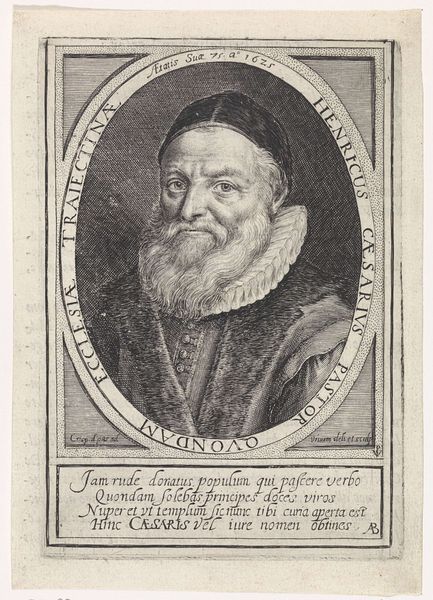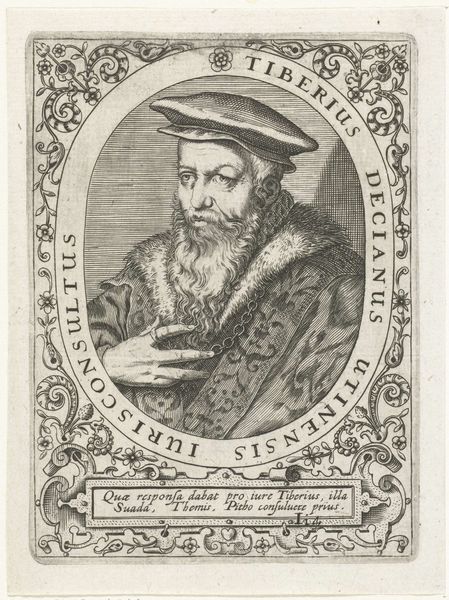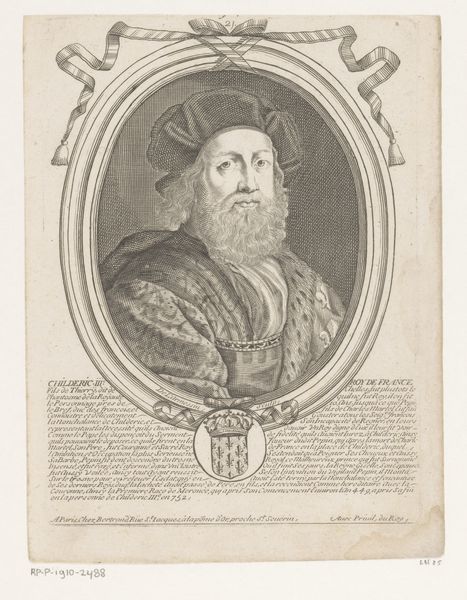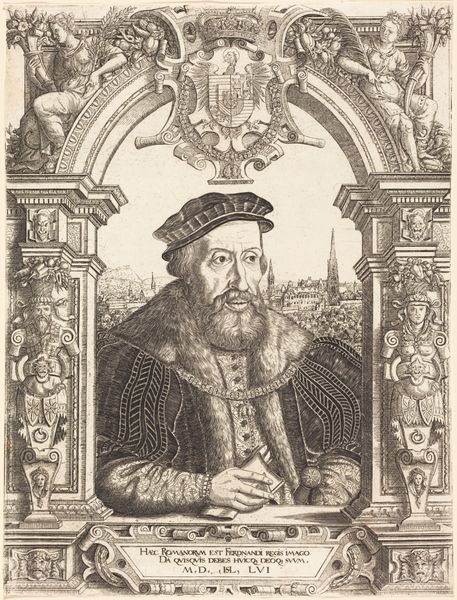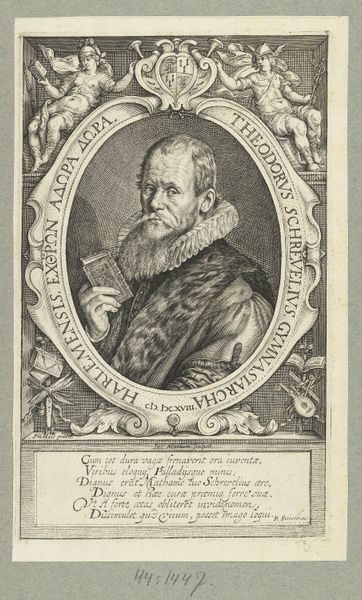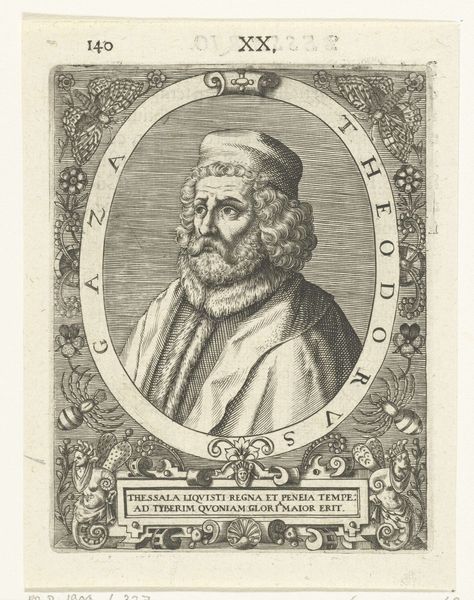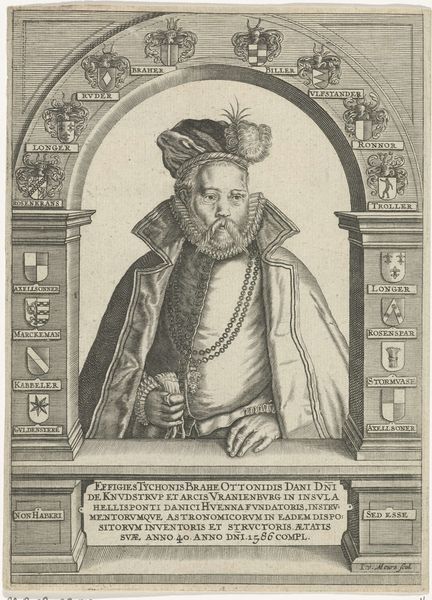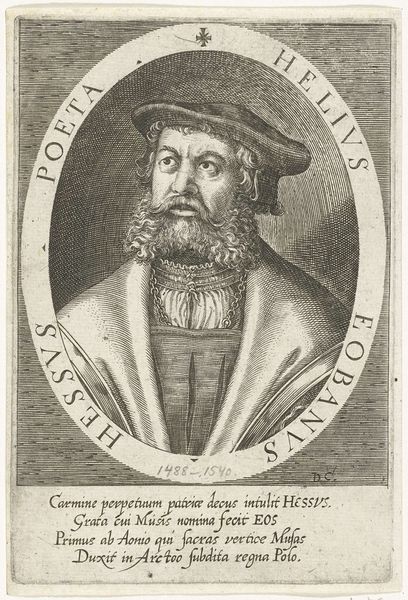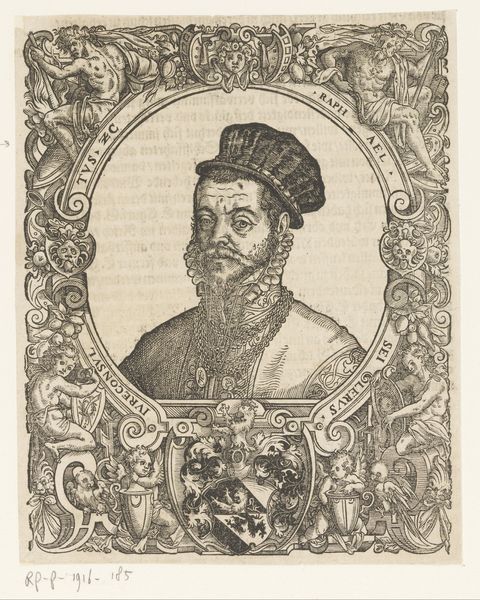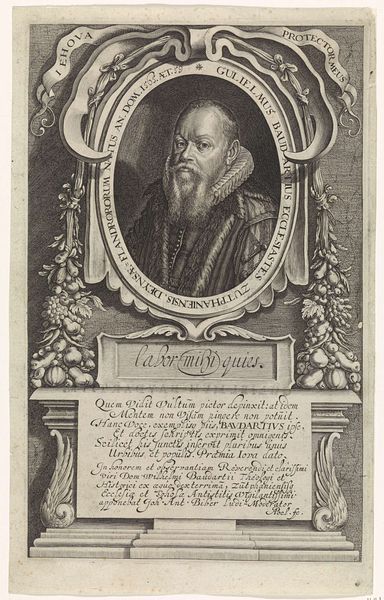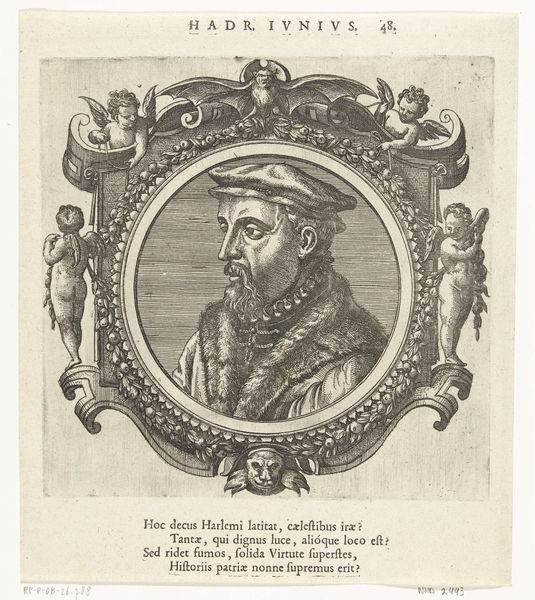
Portret van August II de Jongere, hertog van Braunschweig-Lüneburg 1652
0:00
0:00
coenraetwaumans
Rijksmuseum
print, etching, engraving
#
portrait
#
baroque
# print
#
etching
#
figuration
#
line
#
history-painting
#
engraving
Dimensions: height 354 mm, width 258 mm
Copyright: Rijks Museum: Open Domain
Editor: We're looking at a print from 1652 by Coenraet Waumans titled "Portret van August II de Jongere, hertog van Braunschweig-Lüneburg," at the Rijksmuseum. It’s incredibly detailed. How do you interpret the visual elements in this portrait? Curator: Let us begin with the frame itself. The ornate oval framing device, densely populated with symbolic figures, serves to both contain and elevate the portrait of August II. Note the tension created by the symmetry and asymmetry: the mirroring of the winged figures, horse and stag offset by the central heraldic shield above and the inscription below. Editor: So the frame is just as important as the portrait itself? Curator: Precisely. Observe the lines of the etching. They are not simply representational; they construct a hierarchical space. The dense crosshatching defining the Duke's face contrasts with the relatively sparse lines outlining the frame's adornments. Editor: I see. The use of line weight creates a sense of depth and importance. What does that tell us about Waumans' technique? Curator: The layering of lines, from the delicate rendering of the facial hair to the bolder patterns of his doublet, reveals a mastery of the etching technique. The emphasis is on meticulous detail. Also notice how the pattern is more of a surface feature than a reference to actual material. It is a signifier for high status through artistry. Editor: It's fascinating how the composition guides our eyes and imparts meaning. I had missed so many layers! Curator: Indeed. Formal analysis allows us to appreciate the artwork's internal logic and the artist’s careful control over its constituent elements. It transforms the historical artifact into a sign.
Comments
No comments
Be the first to comment and join the conversation on the ultimate creative platform.
